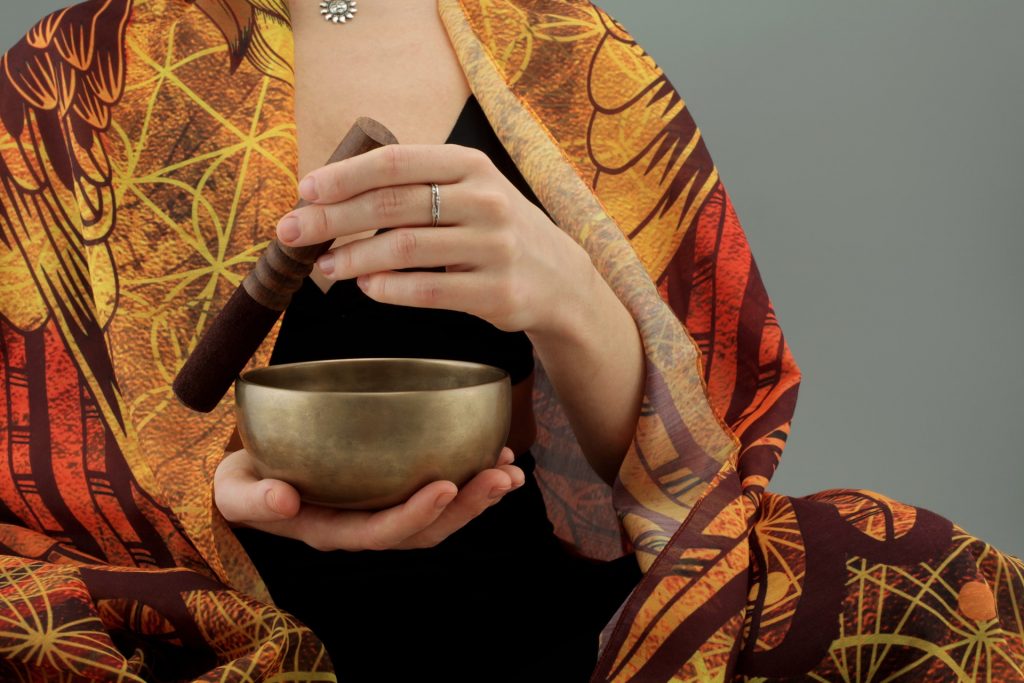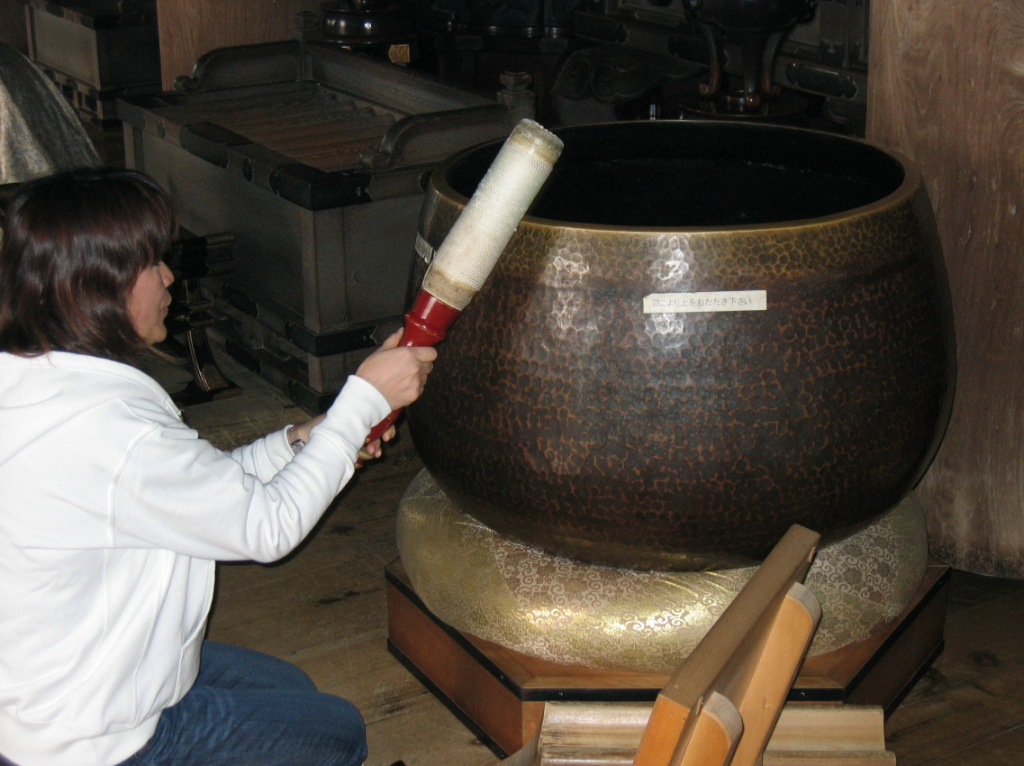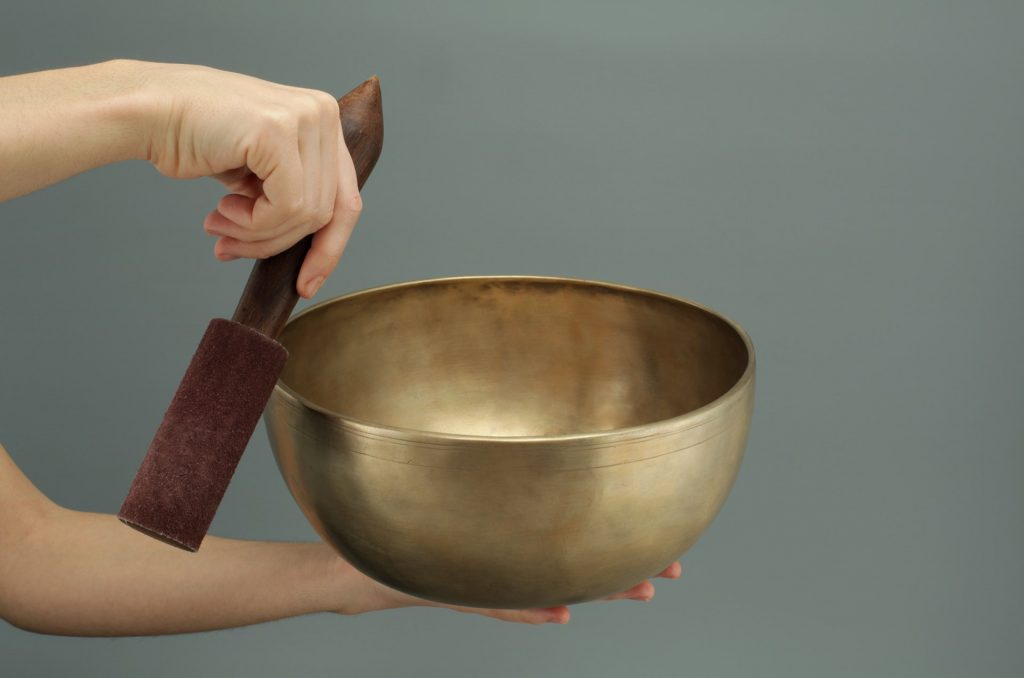Singing Bowl or Standing Bell: Appropriation or Misattribution?
In a crowded conference room, Pagans of several traditions sit with their eyes closed walked through a guided meditation. Their guide, a High Priestess from across the country, walks them into a meditative state using a calm non-anxious tone. As she does so she holds up a heavy Eastern metal bowl, and with a wooden mallet strikes the edge of the bowl filling the packed room with a low bell ring. With the same mallet, she slides the padded portion around the bowl’s rim turning the ring into a long pulsing tone that rises and falls with her hand motion. The attendees are instantly relaxed and begin their mental journey.

Sitting for meditation, starting ritual, focusing the mind. These acts are often enhanced in Pagan circles by use of the calming and focusing sound of a bell. Whether three rings of small altar bell, a table gong, or, very commonly, a singing bowl.
They are ubiquitous in Contemporary Pagan practice, the famed “Tibetan singing bowl.” But is their use a result of appropriation? Can we as Pagans continue to use a cultural item stolen from another people’s? Or are they simply a useful tool benefiting from exotic fictionalization of the east?
Several Pagan Facebook pages are currently debating this after an opinion article from Toronto Star Newspaper’s website thestar.com began circulating. The article, written by Tenzin Dheden of the Canada Tibet Committee, posits that the bowls receive their ritual allure from ahistorical fetishization of the east, and that they are not Tibetan, or mystical in any way.
The page sites a post on anthropology blog Savage Minds by Dr Ben Joffe, a cultural anthropologist. Joff makes some fantastic points, and I will be citing his article heavily here, as Dheden only address’s Joffe briefly. I encourage you to go read Joffe’s full article. It is fantastic and I won’t be doing it justice here.
The basic point of each of these writers is not on the effectiveness of the tool (I’ll address that at the end), but that calling them “Tibetan” is engaging in eastern fetishism. I heartily agree, and will myself be mindful to call them “standing bowls” from here out and remind users of their real origins. But lets look at the arguments, and a few context points for clarification, because it is a fascinating look at these bells we take for granted.

Standing Bells, not Singing Bowls
“…there remains no credible historical evidence for Tibetans ever having used ‘resonating’ metallic bowls in any way that resembles how they are employed by self-avowed sound and ‘vibrational’ healers today. “
Tsering Shakya, Tibetan historian
The basic contention seems to be the New Age use of these bowls as “healing tools.” Sound and vibration healing is given credibility by citing Tibetan tradition. But the evidence is non-existent, and the consensus seems to be that the ringing of these bowls is likely modern. The sound of the singing bells was popularized in the 70’s by New Age music, and Dr Darinda Congdon’s dissertation (“Tibet Chic”: Myth, Marketing, Spirituality and Politics in Musical Representations of Tibet in the United States) argues that their association with Tibet comes from marketing.
“‘Tibet’ has become a term in American culture that acts as a brand and is used to sell music and other products.”
Dr Darinda Congdon ,“Tibet Chic”: Myth, Marketing, Spirituality and Politics in Musical Representations of Tibet in the United States
Buddhist ritual does not seem to use singing bowls at all (Jansen, Eva Rudy, 1992. Singing Bowls: a Practical Handbook of Instruction and Use), instead preferring the simple ring of standing bells.

In fact, the standing bell (which singing bowls seem to be heavily modeling) has existed since the Shang dynasty in 16thc.-11thc. China (Price, Percival, 1983. Bells & Man.).
These bells are used in Buddhist ritual, temples, prayers, meditation, etc. More than a passing resemblance can be seen between these and singing bowls, but these are not designed with singing resonance in mind.
“But I saw…” or “I have a friend who…”
Invariably, when questions of culture, appropriation, or the like are asked, individual responses abound following the line of “yeah, but so and so uses them and he’s a xyz.” While this falls under the Friend argument Association fallacy, it is worth noting here for it’s heavy use in Pagan circles when discussing theft from or imitation of marginalized people.
And indeed, in this case we can site interviews with some Buddhists monks who use the bowl in just the way described here (as a singing bowl). Consider an interview with Lama Lobsang Leshe by Rain Gray in 1989 (Tibetan Singing Bowls an Historical Perspective). This interview is used by Bodhisattva Trading Co in their page on the history of singing bowls, quoting Leshe on the philosophy that someone with bad Karma can’t make these bowls sing.
While the interview is convincing, it doesn’t negate the arguments from Tibetan scholars and current Tibetan nationals and advocates. It is quite likely that the interview is poorly translated, or fabricated in parts. Likewise, as it is a translation, the term sing might instead just mean ring, indicated that these small bowls are indeed scaled down standing bells.
But it is also just as likely that SOME Buddhists in Tibet do indeed use these bowls for sustained rings as is done in modern New Age circles.
If this is the case, it does not make these bowls specifically “Tibetan” and does not negate the concern of Tibetans that missattribution and fetishization is harmful to their culture.
So… we can’t use them…? But they work!

I’m not at all arguing not to use them in your practice.
The sound from small standing bells is effective in mindfulness meditation practices, as studied by professional therapists, and I personally find the lower pitch to be preferable to altar bells when trying to get a group’s attention or direct a chant or ritual.
But it is irresponsible to cite Tibetan tradition as a reason for their use, and the bowls themselves should not be attributed to Tibet at all, being instead miniature version of standing bells. I argue that if you continue to use them in your practice, your options are either to study their proper use as simple standing bells, striking them to ring but not causing the trademark singing by resonating them, or else to be clear about their modern origins and call them simply “bells,” “standing bells,” or even just “singing bowls” (with no “Tibetan attribution).
As with all things: maintain your ministerial/clergy integrity, and be very clear about the actual origins of the items and terms you use. Your students and group members will thank you.
